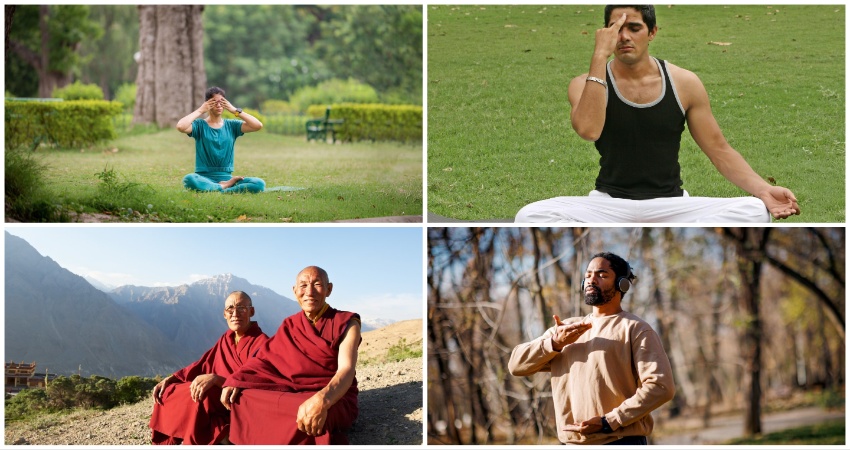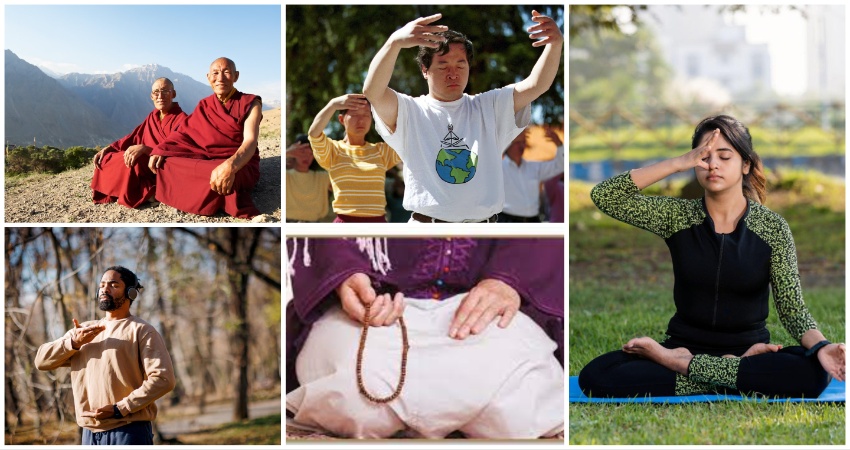Introduction: When the Old Becomes New Again
Huh, technical tone? Alright, let’s dial down the hippie vibes and get a bit more clinical kind of like if a research scientist got stuck in a yoga class.
It’s honestly fascinating to observe the resurgence of ancient respiratory techniques within contemporary health and wellness circles. Practices once confined to Eastern monasteries or obscure spiritual groups are now integrated into mainstream athletic training and clinical protocols. We’re witnessing elite coaches, physicians, and even corporate leaders advocating for methods like diaphragmatic breathing and controlled breath retention methods that have been documented for thousands of years.
From a physiological standpoint, breathing is an automatic function, regulated by the autonomic nervous system. Yet, recent studies highlight that deliberate manipulation of breath patterns can exert measurable effects on parasympathetic activity, stress hormone levels, immune response, and even cognitive performance. Essentially, empirical science is beginning to validate what ancient traditions have claimed all along: breath acts as a direct interface between the mind and the body’s biological systems. It’s kind of wild how something as basic as breathwork is now backed by EEGs, heart rate variability data, and peer-reviewed journals. Guess those old sages knew their stuff.
Understanding the Foundations: What Are Ancient Breathing Techniques?
Ancient breathing techniques operate as structured, intentional methods for modulating respiration much more sophisticated than simply taking a deep breath. These methods typically involve precise control over inhalation and exhalation durations, retention of breath for set intervals, and sometimes alternating between nostrils to achieve specific physiological effects. In certain traditions, practitioners also incorporate vocalizations or coordinated bodily movements, integrating breathwork with physical or mental disciplines to optimize holistic well-being.
Notable Traditions:
- Pranayama (India): This is a fundamental part of yoga, focusing on controlling the vital life energy (called “prana”) by mastering the breath.
- Qigong and Taoist Breathwork (China): These practices weave breathing together with physical movements and the circulation of internal energy within the body.
- Tummo (Tibet): This method combines specific breathing patterns with visualization techniques and certain physical holds (like contracting muscles) to generate inner warmth and build resilience.
- Sufi Breathing (Middle East): Often used in meditation, this involves pairing breathwork with recitations or chants, aimed at fostering spiritual remembrance and a sense of calm.
These techniques were more than just physical exercises; they were seen as ways to heighten awareness, purify the body, and attain deeper levels of consciousness.
Scientific Validation: How Modern Research Supports Ancient Techniques
Over the last couple of decades, the science crowd has taken a serious interest in breathing not just the automatic inhale-exhale, but what happens when you actually control it. Turns out, controlled breathing isn’t just new-age fluff; it’s got some hefty evidence behind it, influencing everything from stress responses to immune function.
1. Autonomic Nervous System Modulation
Let’s cut to it: intentional breathing techniques can literally flip the switch on your autonomic nervous system. Instead of hanging out in that frantic, “fight or flight” state, you can nudge your body into the “rest and digest” setting. This isn’t just a theory. Studies have shown that slowing your breath to around six per minute enhances vagal tone and heart rate variability, both indicators that your system is bouncing back from stress more efficiently. Frontiers in Psychology (2017) published research nailing down these effects.
2. Neurological and Psychological Impacts
Controlled breathing, like alternate nostril breathing or coherent breathing, doesn’t just calm your nerves it’s actively working on your brain. We’re talking about direct modulation of the amygdala (your emotional control center) and the prefrontal cortex (where the decision-making magic happens). That’s why therapies, especially those targeting trauma, leverage breathwork to keep clients grounded and present. Mindfulness-Based Stress Reduction (MBSR) programs are packed with these methods for good reason: they stabilize emotional reactivity and sharpen focus.
3. Immunological and Hormonal Effects
Now, here’s the kicker: advanced breathing techniques can actually influence the immune and endocrine systems. Methods like controlled hyperventilation and breath retention (think Tummo, or the Wim Hof approach) have been linked to measurable drops in inflammation. In 2014, Radboud University ran a study training participants to consciously modulate both their autonomic and immune responses, a feat previously thought to be impossible.
This isn’t just about “taking a deep breath to relax.” Controlled breathing is emerging as a legit tool for influencing physical and mental health, with a growing body of technical research to back it up.
Breakdown of Key Techniques and Their Benefits
Let’s break down these ancient breathing techniques from a more technical standpoint no mystical fluff, just the mechanics and the data.

1. Anulom Vilom (Alternate Nostril Breathing)
Originating in India, this technique requires you to occlude one nostril, inhale, switch nostrils, and exhale. The method alternates airflow between the two nasal passages, creating a physiological balance between cerebral hemispheres. Research indicates this practice enhances cognitive focus, mitigates anxiety symptoms, and ensures symmetrical oxygenation across both sides of the brain. It basically optimizes neural function via controlled breath modulation.
2. Bhramari (Bee Breath)
Also rooted in Indian tradition, Bhramari involves exhaling with a controlled humming vibration. This action stimulates the vagus nerve, reduces systemic blood pressure, and significantly increases endogenous nitric oxide synthesis critical for vascular health and immune modulation. Users report measurable reductions in stress markers and subjective improvements in mental clarity.
3. Qigong Breathing
Developed in China, Qigong synchronizes slow, intentional movements with regulated breath and focused mental imagery. The process is designed to direct bioenergetic flow through anatomical meridians, which, while a traditional concept, aligns with modern findings on enhanced respiratory efficiency, improved proprioception, and cognitive benefits. It’s routinely integrated into rehabilitative protocols, especially for geriatric populations, due to its safety and efficacy.
4. Tummo Breathing
A Tibetan practice, Tummo involves deep inhalation, breath retention, and the engagement of specific muscle groups (bandhas) to generate endogenous heat. Clinical studies have observed increased core body temperature, reduced inflammatory biomarkers, and enhanced oxygen utilization efficiency among practitioners. The method is recognized for its applications in cold adaptation and resilience training.
In summary, these techniques exemplify the intersection of tradition and empirical evidence, each offering distinct physiological benefits supported by contemporary scientific research.
Modern Applications: From Hospitals to Boardrooms
Sure thing, here’s a more technical spin on that info:
Ancient breathing techniques have transitioned far beyond traditional spiritual contexts and are now integrated across various modern fields.
Medical Applications:
In cardiac rehabilitation, clinicians employ structured breathwork protocols to reduce physiological stress and promote cardiac stability. Pulmonary rehabilitation programs utilize targeted breathing exercises to enhance lung function and respiratory muscle strength in individuals with chronic pulmonary conditions.
Mental Health Interventions:
Practitioners frequently incorporate controlled breathing methods into therapeutic approaches for managing PTSD, panic disorders, and depressive symptoms. Veterans’ programs, in particular, combine Pranayama and mindfulness-based interventions to facilitate smoother reintegration and emotional regulation.
Corporate and Occupational Settings:
Major corporations such as Google and Goldman Sachs have embedded breathing sessions into their employee wellness frameworks. Techniques like box breathing are used by executives to regulate stress and maintain composure during high-pressure situations.
Educational Environments:
Educational institutions have begun implementing scheduled breathing intervals to improve student concentration and alleviate anxiety. Research from Harvard suggests that deliberate, structured breathing may optimize working memory, thereby supporting cognitive performance and learning outcomes.
In summary, these ancient practices now serve as evidence-based tools in medicine, psychology, workplace wellness, and education addressing both physiological and psychological demands in contemporary society.
The Spiritual and Philosophical Angle
Putting aside the standard physiological perks, ancient societies actually viewed breathwork as a critical tool for cognitive and spiritual development. In both Vedic and Taoist systems, breath control wasn’t just a wellness routine it was considered fundamental to mastering mental processes. Breathing exercises were seen as a disciplined practice, aimed at cultivating mental clarity, tranquility, and, at the extreme end, transformative insight.
Even though modern science doesn’t exactly use words like “enlightenment,” researchers are noticing measurable neurological changes in people who’ve practiced breathwork long-term. Neuroimaging studies show structural and functional brain differences, which lines up with what those ancient traditions were onto. So, in a way, current scientific findings are validating what people have claimed for centuries: breathwork can literally reshape the brain.
Caution and Considerations
Breathwork Safety Considerations
General Safety
Most breathwork practices are safe for the general population.
Some advanced techniques demand extra caution.4
- Techniques Requiring Supervision
- Kapalabhati
- Tummo
- Extended Breath Holding
Supervision is especially advised for these methods due to their intensity and physiological impact.
Individuals at Higher Risk
- People with heart conditions
- Individuals with hypertension
- Pregnant individuals
- Anyone with a history of seizures
If you fall into any of these categories, professional supervision is strongly recommended.
Breathing as a Modern Medicine
Frankly, in today’s hyper-connected environment constant alerts, non-stop information streams, cognitive overload you’re looking at a perfect storm for chronic stress. Turns out, ancient breathing techniques, once dismissed as mystical or anecdotal, are now being substantiated by contemporary research. Breathing isn’t just about oxygen exchange; it’s a regulatory mechanism deeply intertwined with neuroendocrine function, stress modulation, and long-term health outcomes.
Integrating these millennia-old methods into our daily protocols isn’t just “wellness” fluff, it’s evidence-based optimization. You get coherence across physiological systems: nervous, respiratory, cardiovascular. The result? Enhanced emotional stability, improved resilience, and, honestly, a more robust human system overall. The science is catching up, and the data doesn’t lie.
Published By The Vue Times Editorial Desk | July 2025










